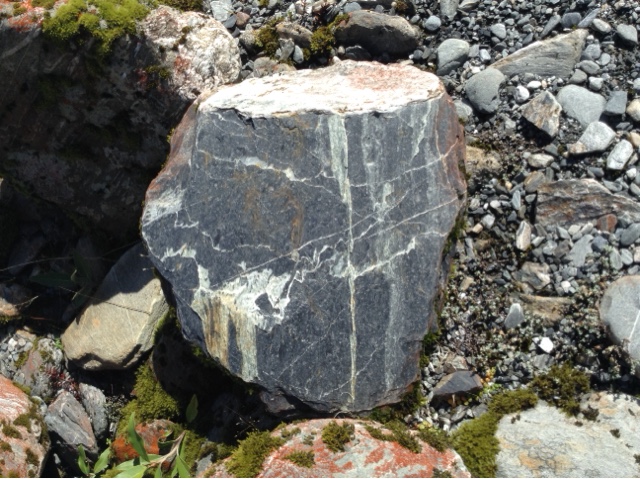Christ Church
Devastating earthquakes in 2010-12 hit this city of 380,000 and has left much of the downtown in shambles. 184 people died in those quakes, and unfortunately, smaller quakes continue. However, the central business district is rebuilding slowly; the resilience is evident everywhere. On a tram ride through the part of town that was cleared, we marveled at the positive energy, and took in our breath in thinking of the 30 billion dollars it will take to get it done. All in a fault zone.
A shopping center made out of containers for now.
Typical shoring up of many buildings
Queenstown and beyond
The view from our hotel in Queenstown
Queenstown is an Aspen-like vacation get away town, an epicenter for winter skiing and summer nature adventures. A compact CBD (central business district) shouts to young, athletic, risk taking, well outfitted Mates and Shielas : you are welcome. Business names such as Hydro Attack, Torpedo, Shotover, Canyon Swing, NZ Skydive, and Ziptrek, to name just a few, lure the fit, beautiful, and probably fool hearty 20 somethings from all corners of the globe to test their resolve and nerve. The drop dead gorgeous bay on a volcanic lake with perfect mountains as a backdrop couches the lively city harbor teeming with restaurants, cafes and outdoor gear shops on every block. It is oh so sublimely civilized.
Sunrise in Queenstown
Did they or didn't they? NO way!
Flax plants. The leaves are stripped then woven into baskets.
The South Island is a bit of the Wild West. OAT builds in to every adventure an opportunity to discuss controversial topics in each country. We visited with Peter Bushman, a one man Erin Brockovitch/mountain trapper type who has a crusade to save the environment from the ravages of an insidious lethal chemical, 1080, that is dropped by the government to kill the possums. Unfortunately it also kills many other animals, including those in the human food chain.
The small seaside town of Hokitika was our home for two days. It has become a mini destination for art enthusiasts with some galleries and jade carving businesses. The one movie theater was showing The Hunt For the Wilder People, a NZ film that had some buzz at Sundance. Our guide, Jane, is somehow related to the writer so we went to see it with her, which was the night after the opening. Apparently the dog stars walked the green carpet then.
A highlight of the trip for me was a visit to a sheep farm. Not only did we witness a shearing, but a masterful sheep herding demonstration by "Pete" a canine sheep wrangler extrordinarre.
The directives of his steadfast eyes coupled with agile body language had that unruly mob of future sweaters and lamb chops clustered like a school of frightened fish waiting for the teacher's yardstick to smack. I could have watched all day.
Wellington is the capitol, and the epicenter of the NZ film production industry. The film studio and production company WETA, which have made the artistry for Hobbit films, Avitar, Mad Max and many more have extensive studios for filming, creation of creatures, and computer operations.
Greetings in the Wellington airport.
A tour of an art studio gave us an appreciation of the complicated process for making objects in the films from sketch to computer program to e printer to hand work. Months go into each object, or costume, or character face, any of which might be in a film for just seconds. The fastidiousness of Peter Jackson is evident down to the skin dimples and hair. It might take a week, for instance, to make eyebrows on a Hobbit.
Related is an extraordinary exhibit at the Te Papa museum in Wellington, the most imaginative and exciting natural history museum I have seen. Besides the fact that locally they have a lot to work with (volcanos, glaciers, and earthquakes) the current exhibit, created by WETA is about the ANZAC (Australian and New Zealand Army Corps) during the WWI Gallopoli battles. There are no creatures, instead you follow several real soldiers which have been created at 2 1/2 times their size. They are so artfully created; you see beads of sweat, and seeping blood from wounds.
Computer illustrated battles, sparsely staged artifacts, and photographic essays in winding dark corridors (to simulate the trenches) beacon you while dramatic but subtle voice and music pulls at your heartstrings. The experience offered a thorough education of the tragic folly that was trench warefare, and a condemnation of foolish wars and personalities who create them in general.
















































